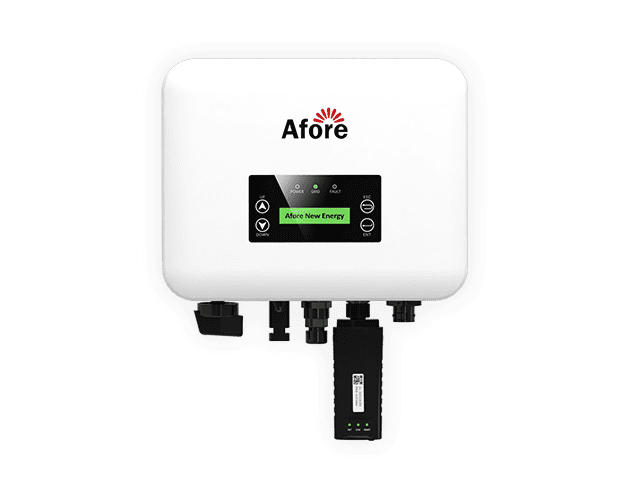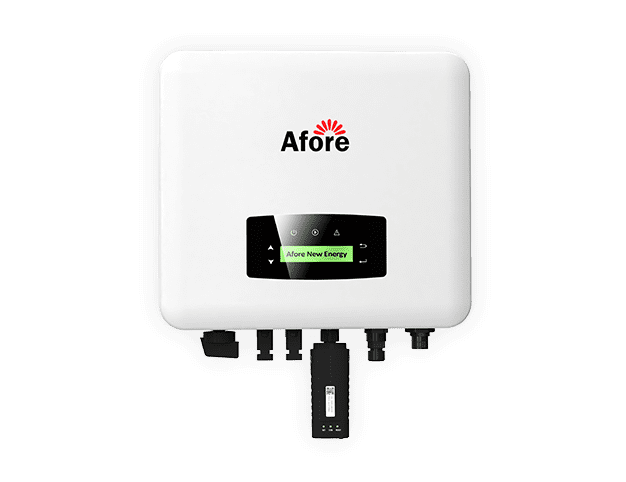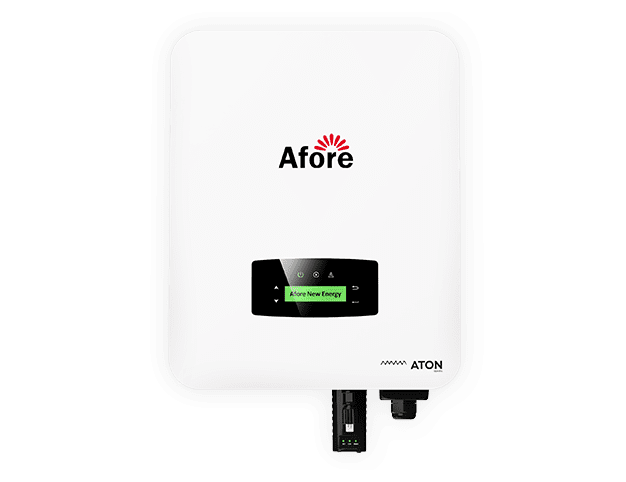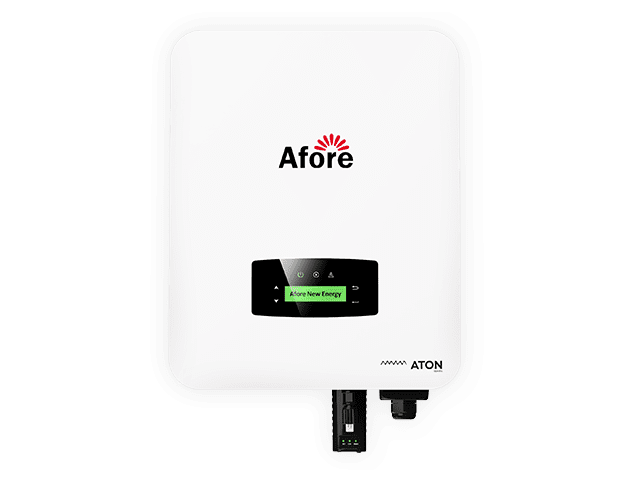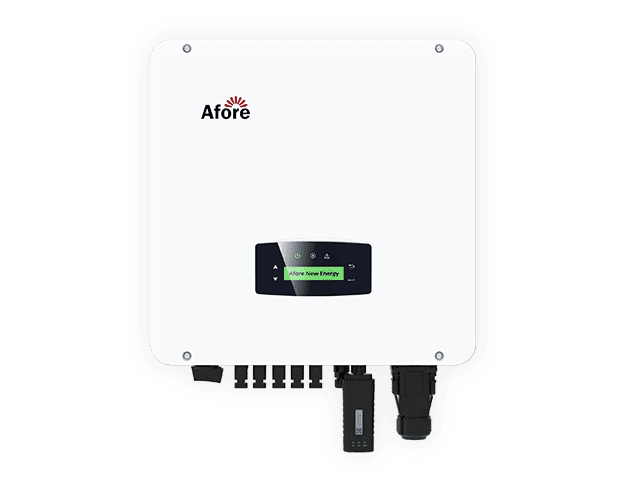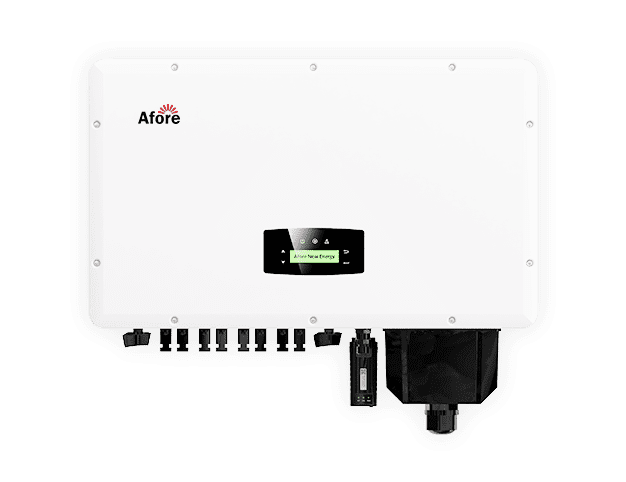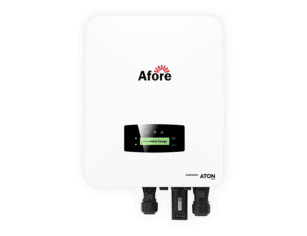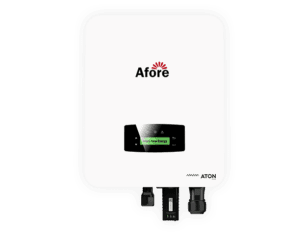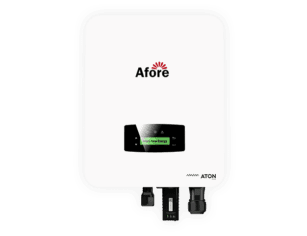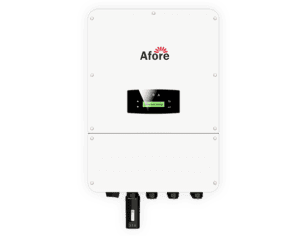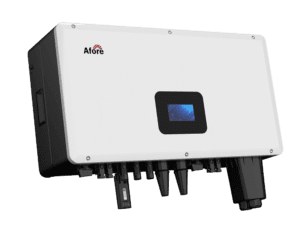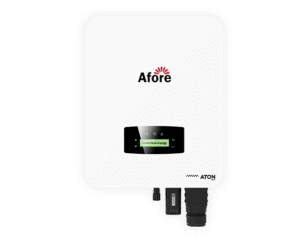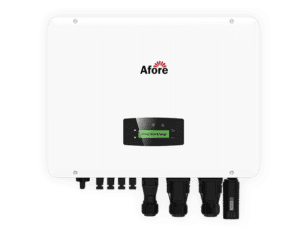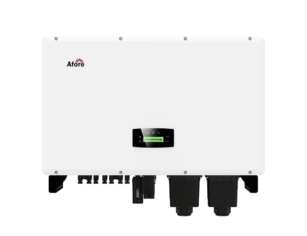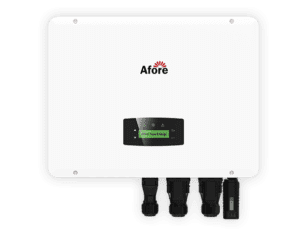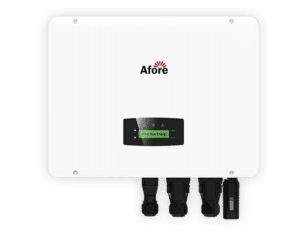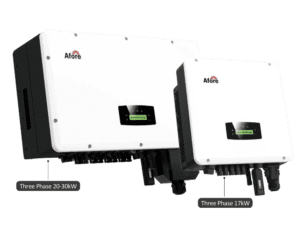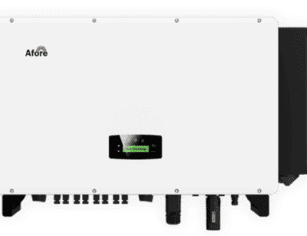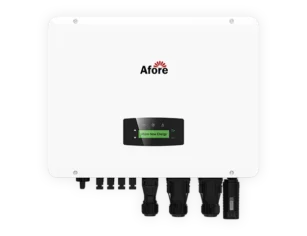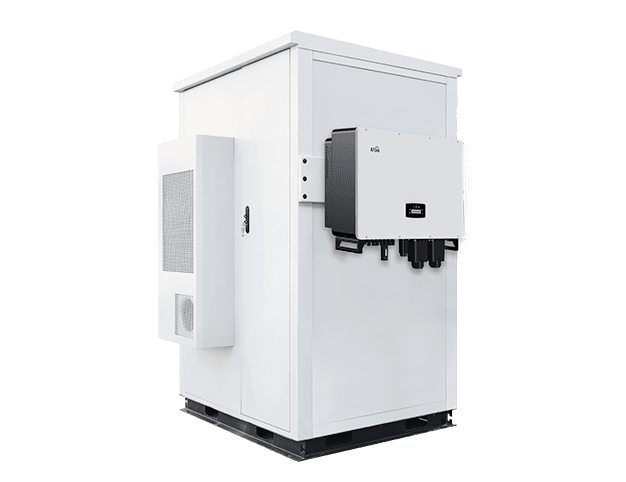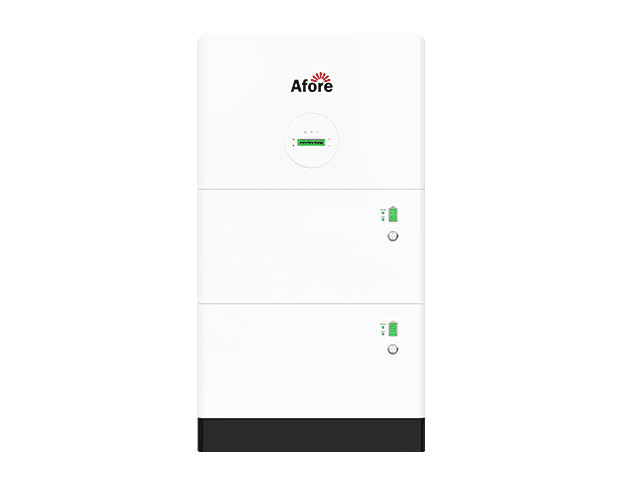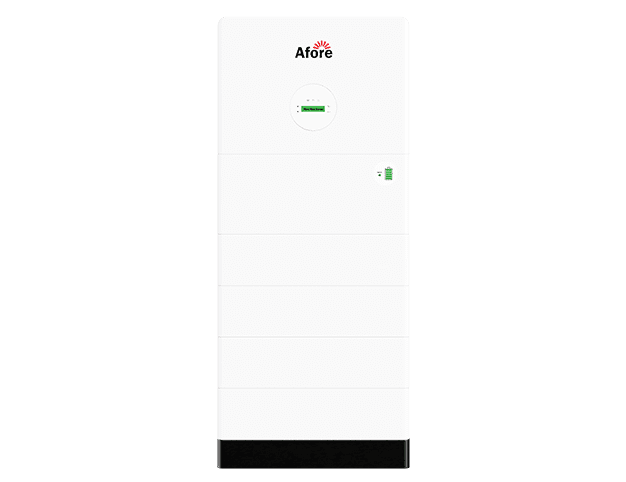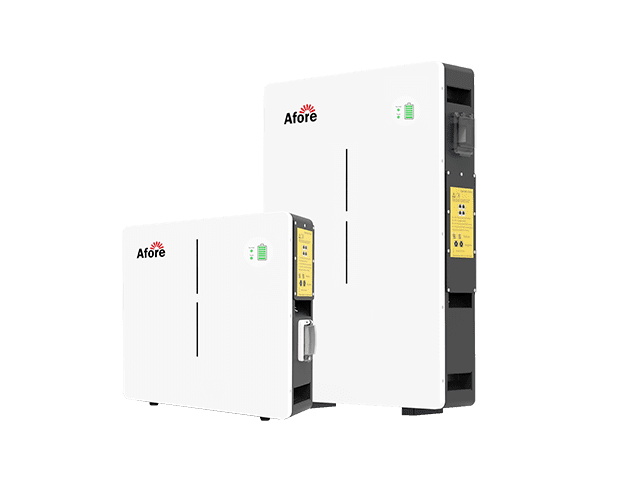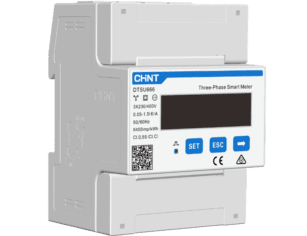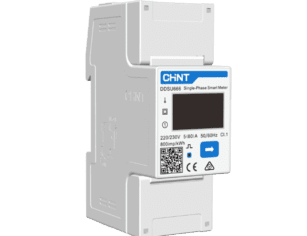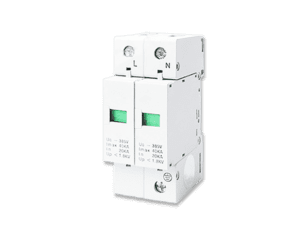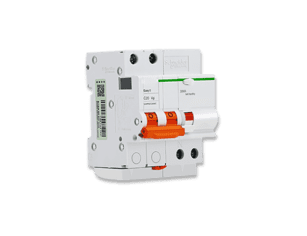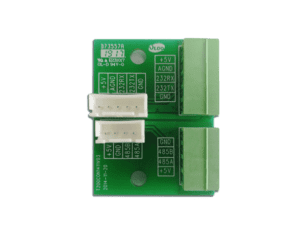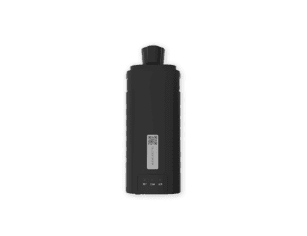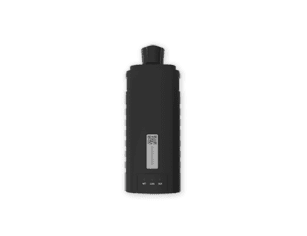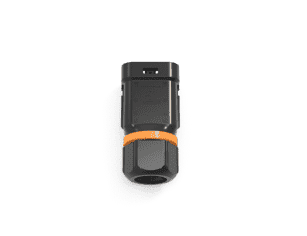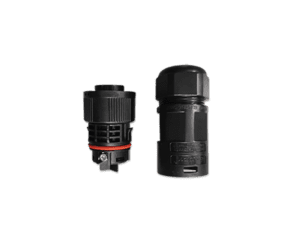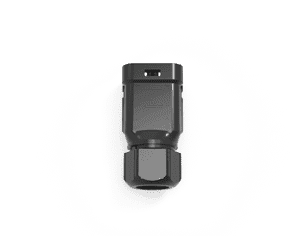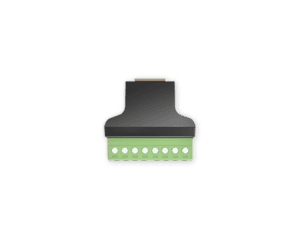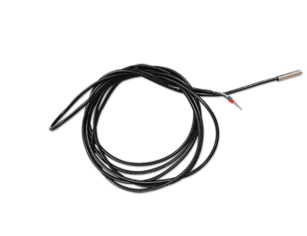Onduleur de 1500 watts : tout ce qu'il faut savoir
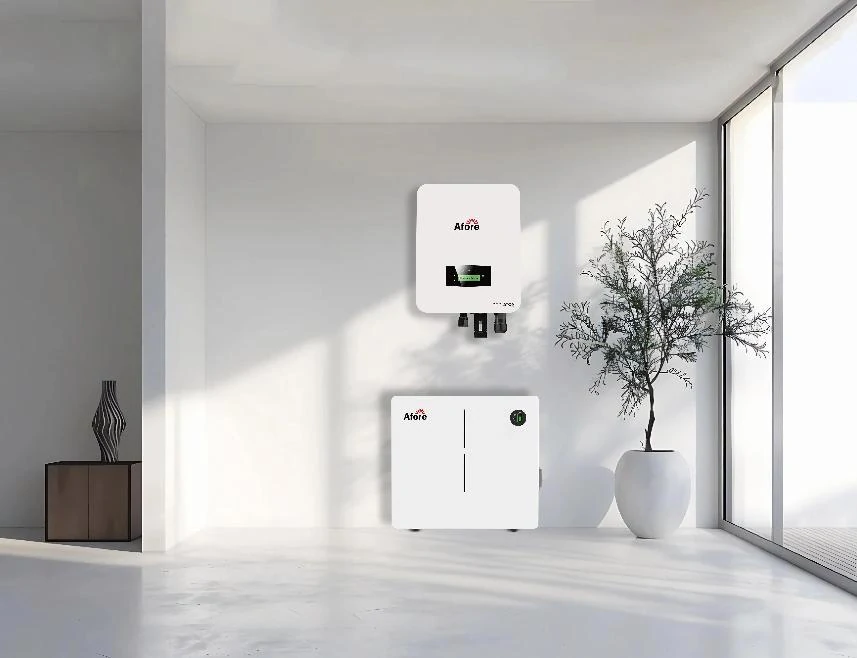
Table des matières
Vous envisagez d'investir dans un onduleur de 1500 watts, mais vous ne savez pas exactement ce qu'il peut supporter ou comment il peut répondre à vos besoins en énergie ? Vous n'êtes pas vraiment seul. Que vous mettiez en place un système d'alimentation solaire, que vous vous prépariez à des situations d'urgence ou que vous souhaitiez simplement disposer d'une énergie hors réseau fiable pour camper, cette taille d'onduleur est idéale pour concilier capacité et efficacité.
Pourquoi ne pas prendre une tasse de café et découvrir ensemble ces caractéristiques de base ? Dans ce guide, nous vous donnons un aperçu complet de la puissance de fonctionnement de l'onduleur de 1500 watts, de l'autonomie des différentes batteries, du nombre de batteries nécessaires et de bien d'autres choses encore.
Qu'est-ce qu'un onduleur de 1500 watts ?
Si vous êtes novice en matière d'alimentation hors réseau ou de construction d'un système de secours pour votre maison, vous avez probablement entendu parler de l'onduleur de 1500 watts. Mais qu'est-ce que cela signifie exactement ? Et surtout, comment s'intègre-t-il dans votre système énergétique ?
Un onduleur de 1500 watts est un appareil qui convertit le courant continu (généralement issu d'une batterie de 12 ou 24 V) en courant alternatif (utilisé par les appareils ménagers et les appareils électroniques). Ainsi, lorsque vous êtes éloigné du réseau ou que vous subissez une panne de courant, cet onduleur devient votre source d'alimentation de choix.
Que signifie réellement "1500 watts" ?
Le chiffre "1500 watts" fait référence à la puissance continue que l'onduleur peut gérer. En termes simples, un onduleur de 1500 watts est comme une petite station d'énergie, qui peut fournir en permanence une puissance de 1500 watts et traiter facilement les gros consommateurs d'énergie de votre maison, tels que les fours à micro-ondes, les ordinateurs portables, les cafetières et même les petits réfrigérateurs.
La plupart des onduleurs ont une puissance de crête ou de surtension qui est souvent le double de leur puissance continue. Cela signifie que votre onduleur de 1500 watts peut en fait supporter une surtension de 3000 watts pendant une courte période. Cela peut s'avérer très important pour le démarrage d'appareils exigeants tels que les compresseurs ou les mixeurs.
Onde sinusoïdale pure et onde sinusoïdale modifiée : Quelle est la différence ?
Lorsque vous achetez un onduleur de 1500 watts, vous en trouverez deux types principaux :
- Onduleur à onde sinusoïdale pure: Ce type d'alimentation produit une énergie propre et régulière qui imite celle que vous obtenez du réseau. Il est idéal pour les appareils électroniques sensibles, les appareils médicaux (comme les appareils de PPC) et les appareils à moteur.
- Onduleur sinusoïdal modifié: Ils sont plus économiques mais peuvent poser des problèmes avec certains appareils. Vous pouvez constater des bourdonnements, une dégradation des performances, voire des dommages au fil du temps si les appareils connectés ne sont pas compatibles.
Cela vaut vraiment la peine d'investir dans un onduleur sinusoïdal de 1500 watts si vous voulez protéger vos appareils, en particulier les ordinateurs portables, les téléviseurs et les appareils de cuisine.
Pourquoi choisir un onduleur de 1500 watts ?
Alors pourquoi ne pas opter pour un modèle plus grand ou plus petit ? L'onduleur de 1500 watts est si populaire pour les raisons suivantes :
- Équilibre entre puissance et efficacité: Il est suffisamment puissant pour faire fonctionner les appareils essentiels, mais ne vide pas votre batterie trop rapidement.
- Portable et compact: Cette taille est plus facile à installer et à transporter que les onduleurs de 2000W ou 3000W.
- Abordable et polyvalent: Que vous fassiez du camping, que vous travailliez dans votre fourgon ou que vous vous prépariez à des coupures de courant, un onduleur de 1500 watts répond à la plupart des cas d'utilisation.
En bref, l'onduleur de 1500 watts vous fournira une alimentation régulière sans jamais dépasser les limites. Il est parfait pour voyager dans votre véhicule récréatif, pour être autonome avec un système solaire, pour travailler dans un atelier de réparation mobile ou même pour les urgences à la maison.
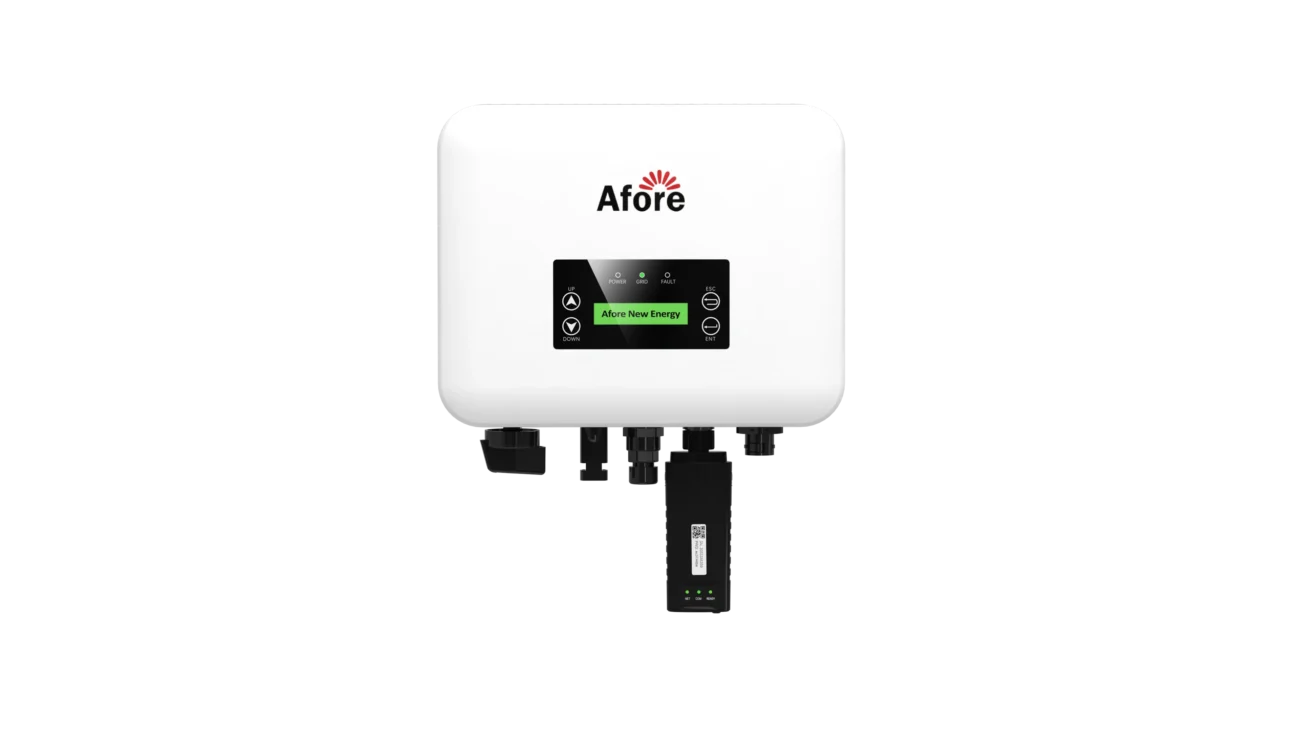
Que peut faire fonctionner un onduleur de 1500 watts ?
Avant d'envisager l'achat d'un onduleur de 1500 watts, de nombreuses personnes se posent la question suivante : "Mais à quoi ça sert, ce truc ?". C'est une bonne question, car comprendre ce que peut faire un onduleur de 1500 watts peut vous aider à planifier plus intelligemment, à éviter les surcharges et à maximiser votre consommation d'énergie.
Voyons cela en détail.
Comprendre la puissance en watts : Pourquoi c'est important
Chaque appareil que vous utilisez a une puissance nominale, généralement mesurée en watts. Votre onduleur de 1500 watts peut gérer jusqu'à 1500 watts de puissance continue, ce qui signifie que la puissance totale de tous les appareils branchés en même temps ne doit pas dépasser cette valeur.
Par exemple, si vous utilisez simultanément un four à micro-ondes de 700 watts et une cafetière de 500 watts, la puissance totale sera de 1200 watts, ce qui est tout à fait acceptable. Mais si vous utilisez en même temps un mixeur de 400 watts, votre onduleur de 1500 watts sera surchargé. C'est pourquoi il est essentiel de connaître la puissance de chaque appareil avant d'actionner l'interrupteur.
Appareils courants qu'un onduleur de 1500 watts peut prendre en charge
Une liste type d'appareils pouvant fonctionner avec des onduleurs de 1500 watts - soit individuellement, soit ensemble, en fonction de leur charge totale - est présentée ci-dessous :
Appareils de cuisine
- Micro-ondes (700-1000W)
- Cafetière (600-800W)
- Mixeur (300-500W)
- Grille-pain (800-1500W, courtes périodes)
- Petite bouilloire électrique (1000W)
Divertissement et électronique
- Ordinateur portable (50-100W)
- TV (100-200W)
- Consoles de jeux (150-200W)
- Routeur WiFi (10-20W)
- Lecteur DVD ou boîtier de diffusion en continu (15-30W)
Les produits de première nécessité
- Réfrigérateur compact (100-300W en fonctionnement, 600W en surtension)
- Ventilateur (50-120W)
- Lampes LED (10-20W par ampoule)
- Couverture électrique (100-200W)
- Machine CPAP (30-60W)
Outils électriques (pour une utilisation à court terme)
- Chargeur de perceuse sans fil (70-100W)
- Ponceuse (200-300W)
- Petite scie circulaire (jusqu'à 1200W)
Ce qu'un onduleur de 1500 watts ne peut pas faire fonctionner (en toute sécurité)
Bien que l'onduleur de 1500 watts soit puissant, il n'est peut-être pas adapté aux appareils lourds ou aux outils qui doivent être constamment alimentés en électricité. Voici les appareils qui sont généralement interdits :
- Climatiseurs centraux
- Machines à laver
- Réfrigérateurs ou congélateurs de taille normale (certains modèles compacts peuvent fonctionner)
- Chauffe-eau électriques
- Gros outils électriques (soudeuses, scies à table, etc.)
- Sèche-cheveux (généralement 1500-1800W)
Si vous essayez de faire fonctionner l'un de ces appareils sur un onduleur de 1500 watts, vous risquez de déclencher la protection contre les surcharges de l'appareil ou d'endommager à la fois l'onduleur et vos appareils.
Cas d'utilisation dans le monde réel : La vie en camping-car
Imaginez que vous viviez dans un camping-car équipé de panneaux solaires et d'un parc de batteries. Votre onduleur de 1500 watts est parfait pour alimenter votre cafetière le matin, charger votre ordinateur portable et regarder la télévision - tout cela en même temps. Ajoutez quelques lampes LED et un ventilateur pour l'aération, et vous resterez dans la limite des 1500 watts.
Conseil de pro : Tenir compte des surtensions
N'oubliez pas que certains appareils, en particulier ceux dotés d'un moteur ou d'un compresseur, consomment plus d'énergie au démarrage qu'en fonctionnement. Votre onduleur de 1500 watts peut avoir une capacité de surtension allant jusqu'à 3000 watts, ce qui permet de courtes pointes. Donc, oui, vous pouvez faire fonctionner ce petit réfrigérateur... mais pas avec tous les autres appareils allumés en même temps.
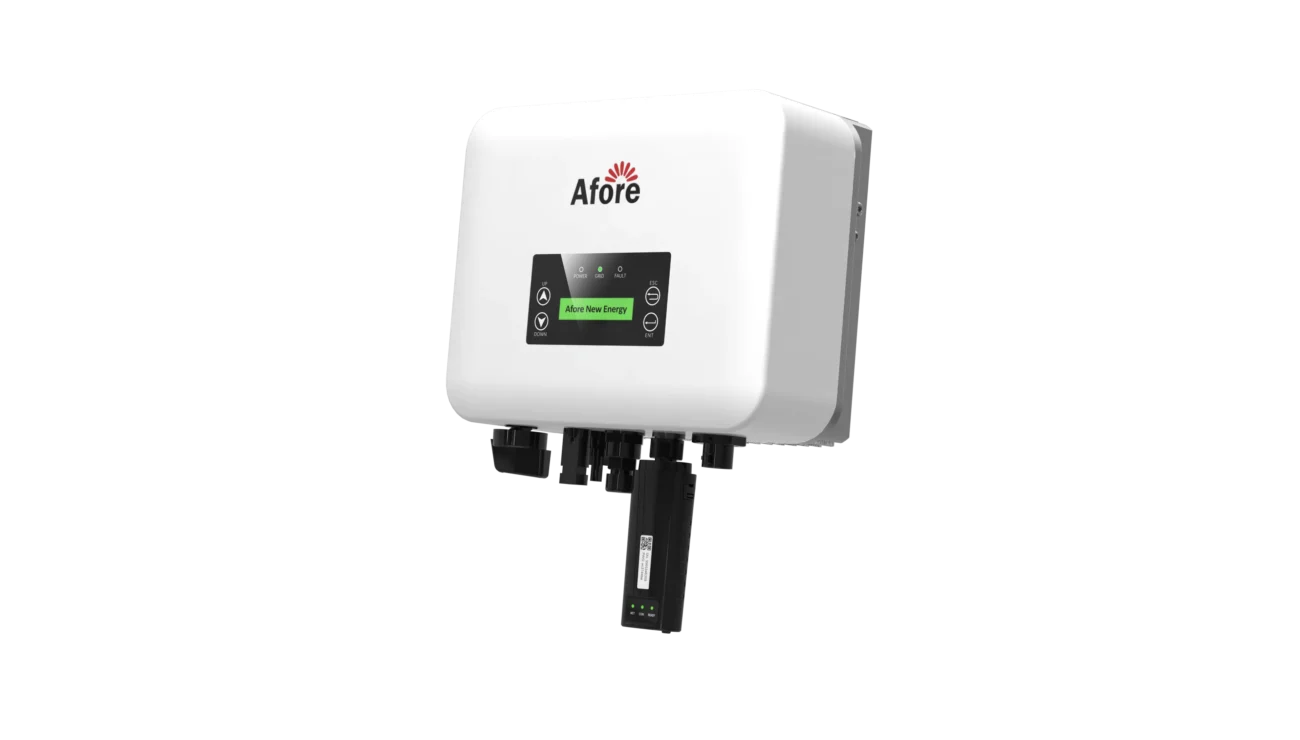
Combien de batteries faut-il pour un onduleur de 1500 watts ?
Vous avez choisi votre onduleur de 1500 watts et vous vous demandez probablement : "De combien de batteries ai-je besoin pour le faire fonctionner ?" C'est une question intelligente, qui dépend de quelques facteurs clés. Il s'agit de la durée de fonctionnement de votre appareil, du type de batterie que vous utilisez et de l'efficacité de votre système.
Découvrons-le.
Les mathématiques de base de la batterie
Pour déterminer le nombre de batteries dont vous avez besoin pour un onduleur de 1500 watts, vous devez utiliser une formule simple :
- Capacité de la batterie (en wattheures) = Tension de la batterie × Ampères-heures (Ah) de la batterie
La plupart des gens utilisent des batteries de 12V, donc une batterie standard de 12V 100Ah vous donne :
- 12 × 100 = 1200 wattheures (Wh)
Cela signifie qu'une batterie 12V 100Ah entièrement chargée peut théoriquement alimenter un onduleur de 1500 W pendant moins d'une heure à pleine charge.
Mais attendez, ce n'est pas aussi simple dans la réalité.
Durée d'alimentation réaliste
Supposons que vous fassiez fonctionner votre onduleur de 1500 watts à pleine capacité (1500W). Une batterie 12V 100Ah (1200Wh) ne tiendrait même pas une heure entière. De plus, vous ne voulez pas vider une batterie au plomb en dessous de 50%, ce qui l'endommagerait au fil du temps.
En réalité, cette même batterie vous donne environ 600 wattheures utilisables, ce qui ne représente que 20 à 25 minutes de fonctionnement à pleine puissance. C'est pourquoi vous aurez probablement besoin de plusieurs batteries si vous voulez que votre onduleur de 1500 watts fonctionne plus longtemps.
Exemple de configuration
Voici un exemple rapide pour vous aider à visualiser :
- Vous voulez faire fonctionner votre onduleur à 750 W pendant 2 heures ?
- Cela représente 1500Wh d'énergie nécessaire.
- Si vous utilisez des batteries 12V 100Ah (600Wh utilisables par batterie), vous aurez besoin d'au moins 3 batteries.
- Vous voulez faire fonctionner 1500W pendant 1 heure ?
- Vous aurez à nouveau besoin d'environ 3 batteries 12V 100Ah pleines, car 3 × 600Wh = 1800Wh.
Le type de batterie est important
Toutes les batteries ne sont pas égales. Le type de batterie que vous choisissez aura un impact sur le nombre et l'efficacité des batteries requises pour votre onduleur de 1500 watts :
- Batteries plomb-acide (AGM, Gel) : Moins chères, mais ne peuvent utiliser qu'environ 50% de leur capacité.
- Batteries au lithium-ion (LiFePO4) : Le coût initial est plus élevé, mais vous pouvez utiliser en toute sécurité 90-100% de sa capacité, ce qui la rend plus efficace et plus durable.
Il se peut que vous n'en ayez besoin que de 2 au lieu de 3 si vous utilisez des piles au lithium, en fonction de l'usage que vous en faites.
Systèmes 12V et 24V
La plupart des onduleurs de 1500 watts fonctionnent sur un système 12V ou 24V. Un système 24V est plus efficace et nécessite moins de courant pour la même quantité de puissance. Cela signifie des câbles plus fins, un fonctionnement plus froid et souvent moins de batteries nécessaires.
- Système 12V : Nécessite plus d'ampères-heures → plus de batteries
- Système 24V : Moins d'ampères, plus efficace → potentiellement moins de batteries pour la même durée de fonctionnement
Si vous prévoyez d'utiliser régulièrement votre onduleur de 1500 watts pour vivre hors réseau, il serait plus judicieux d'opter pour le 24V.
Tableau de référence rapide
| Temps d'utilisation | Charge (Watts) | Tension du système | Type de batterie | Nombre de batteries de 100Ah |
| 1 heure | 1500W | 12V | Plomb-acide | 3-4 |
| 1 heure | 1500W | 24V | Lithium | 2 |
| 2 heures | 750W | 12V | Plomb-acide | 3 |
| 4 heures | 500W | 12V | Lithium | 2-3 |
Conseil de pro: Ajoutez toujours un tampon ! Votre onduleur consomme lui-même une certaine quantité d'énergie (appelée surcharge de l'onduleur), et le rendement réel est généralement de l'ordre de 85-90%. En cas de doute, arrondissez votre nombre de batteries.
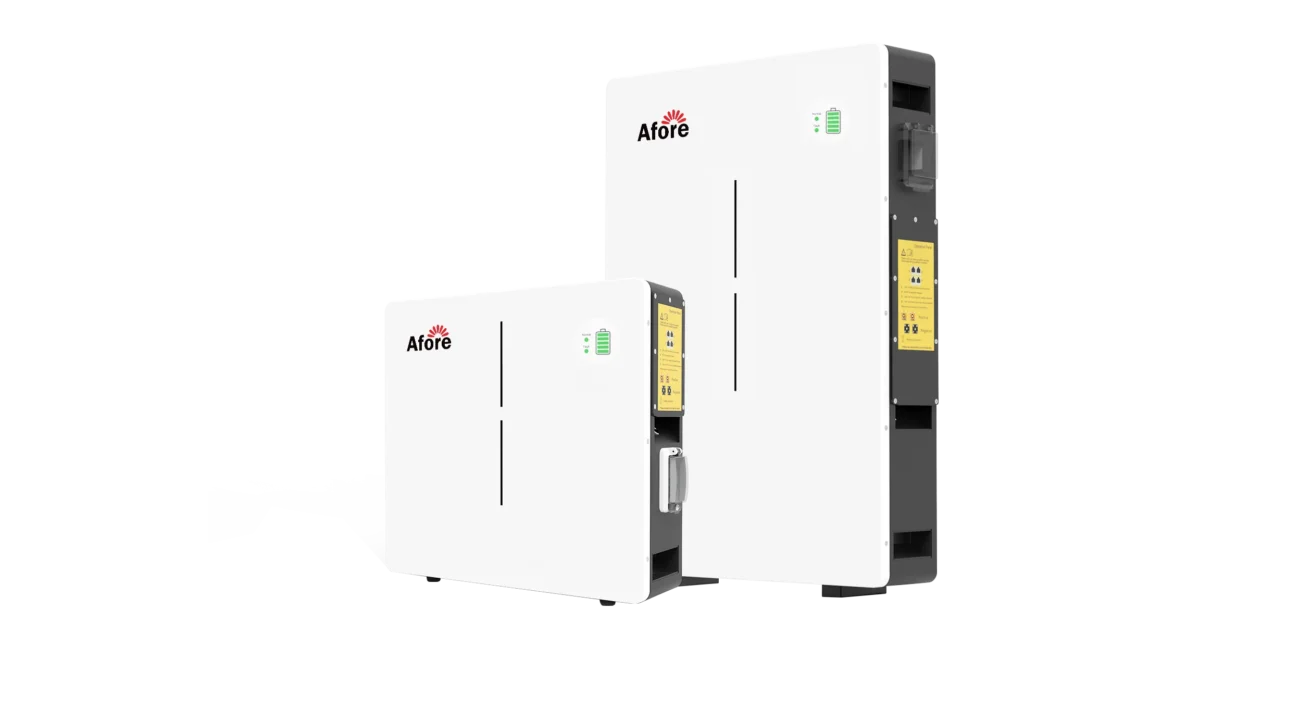
Quelle est la durée de vie d'une batterie 12V avec un onduleur de 1500W ?
Soyons réalistes : combien de temps pouvez-vous faire fonctionner votre matériel ?
Supposons une batterie à décharge profonde de 12 V et 100 Ah. Cela représente 1200 wattheures (Wh) d'énergie.
- A pleine charge de 1500W : 1200Wh / 1500W = 0,8 heures (48 minutes)
Mais la plupart des gens ne le font pas fonctionner à pleine charge en permanence. Si vous ne consommez que 750 W, vous obtiendrez environ 1,6 heure.
N'oubliez pas que l'efficacité de la batterie, l'efficacité de l'onduleur (~85-90%) et l'âge ont une incidence sur l'autonomie.
L'énergie solaire et un onduleur de 1500 watts
Associer un onduleur de 1500 watts à l'énergie solaire ? C'est une bonne idée. C'est un moyen propre, silencieux et de plus en plus abordable de produire de l'électricité, en particulier pour les installations hors réseau, les véhicules de loisirs, les cabanes ou les systèmes domestiques de secours. Mais dans quelle mesure l'énergie solaire fonctionne-t-elle avec un onduleur de 1500 watts ? Voyons ce qu'il faut savoir.
Peut-on faire fonctionner un onduleur de 1500 watts avec de l'énergie solaire ?
Bien entendu, les onduleurs de 1500 watts sont bien adaptés aux systèmes solaires de petite et moyenne taille. Les onduleurs de 1500 watts sont bien adaptés aux systèmes solaires de petite et moyenne taille. Que vous fassiez fonctionner des appareils dans votre véhicule de loisirs ou que vous alimentiez des charges critiques dans votre maison pendant une panne de courant, les panneaux solaires peuvent charger la banque de batteries alimentée par l'onduleur de 1500 watts.
Mais la clé est la suivante : les panneaux solaires n'alimentent pas directement l'onduleur - vous chargez les batteries, à partir desquelles l'onduleur tire son énergie. Cela signifie que votre installation solaire doit produire suffisamment d'énergie au cours de la journée pour recharger le parc de batteries afin que votre onduleur puisse faire son travail.
De combien de panneaux solaires avez-vous besoin ?
Le nombre de panneaux solaires dont vous aurez besoin dépend de ce qui suit :
- Durée d'utilisation de l'onduleur
- Combien d'énergie vos appareils consomment-ils ?
- La taille et le type de votre parc de batteries
- Nombre d'heures d'ensoleillement par jour dans votre région
Voici une idée générale :
Supposons que vous souhaitiez alimenter l'onduleur de 1500 watts pendant 2 heures par jour à pleine charge. C'est à dire :
- 1500W × 2 heures = 3000Wh (3kWh)
Supposons que vous vous trouviez dans une région bénéficiant de 5 heures d'ensoleillement maximum par jour et que vous utilisiez des panneaux solaires de 300 W, vous aurez besoin de.. :
- 3000Wh ÷ 5h = 600W de panneaux
Deux panneaux de 300 W suffisent donc à couvrir vos besoins quotidiens, à condition que le ciel soit dégagé et l'inclinaison optimale. Bien sûr, vous devrez en ajouter un peu plus pour compenser les pertes de l'onduleur, les inefficacités des panneaux et les jours nuageux. Il serait plus réaliste de recommander 3 ou 4 panneaux pour obtenir des performances constantes.
Solaire + onduleur = liberté hors réseau
L'un des principaux avantages de l'utilisation de l'énergie solaire avec un onduleur de 1500 watts est l'indépendance énergétique. Vous n'avez pas à compter sur des générateurs à gaz bruyants ou à vous inquiéter des défaillances du réseau. Tant que le soleil brille et que les panneaux solaires produisent de l'énergie correctement, votre électricité domestique de base fonctionnera.
Il est également évolutif. Commencez par une installation de base et augmentez facilement le champ solaire ou le parc de batteries si vous avez besoin de temps de fonctionnement plus longs ou d'une plus grande capacité de charge plus tard.
Attention à ces erreurs courantes
Évitez les erreurs de débutant suivantes lors de la mise en place d'un système solaire + onduleur de 1500 W :
- Sous-dimensionnement des panneaux: Si votre installation solaire ne peut pas recharger complètement vos batteries, votre onduleur n'aura pas assez de jus.
- Utilisation d'un contrôleur PWM avec de grands réseaux: Les régulateurs MPPT sont plus efficaces - en particulier avec les panneaux solaires d'une puissance supérieure - et peuvent utiliser plus complètement l'énergie solaire et augmenter l'efficacité de la production d'électricité de votre système.
- Omission d'un fusible ou d'une déconnexion approprié(e): La sécurité avant tout. Protégez votre système contre les surtensions et les défauts.
- Tension incompatible: Assurez-vous que votre système solaire (12V ou 24V) correspond à la configuration de votre batterie et de votre onduleur.
Un onduleur de 1500 watts s'associe parfaitement à l'énergie solaire si le système est bien dimensionné. Que vous soyez en camping-car, que vous viviez hors réseau ou que vous vous prépariez à des situations d'urgence, cette combinaison vous permet de bénéficier d'une énergie silencieuse et fiable, alimentée par le soleil.
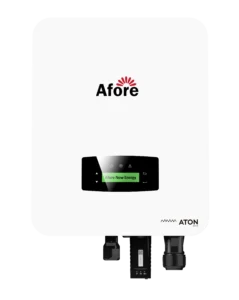
Choisir le bon onduleur 1500W
Avec un large éventail de modèles d'onduleurs de 1500 watts sur le marché, choisir celui qui répond vraiment à vos besoins peut s'avérer être un véritable casse-tête. Mais ne vous inquiétez pas, nous sommes là pour vous aider.
Tension d'entrée : 12V ou 24V ?
La plupart des onduleurs de 1500 watts sont disponibles en modèles 12V ou 24V. Votre choix doit dépendre de votre système de batterie :
- Les systèmes 12V sont plus courants dans les véhicules, les VR et les petites installations solaires.
- Les systèmes 24V sont plus efficaces pour les longues durées et les charges plus élevées, avec un câblage plus fin et moins de chaleur.
Envisagez le 24V si vous construisez une nouvelle installation solaire à partir de zéro - cela vous facilitera généralement la vie par la suite.
Puissance continue et puissance de crête
Les onduleurs de 1500 watts fournissent généralement une puissance de 1500 watts en fonctionnement continu, mais vérifiez également les valeurs nominales de crête ou de surtension. Certains appareils (par exemple, les réfrigérateurs ou les outils électriques) démarrent à 2 ou 3 fois la puissance de fonctionnement continu.
Recherchez des onduleurs ayant une capacité de surtension d'au moins 3 000 watts si vous prévoyez de faire fonctionner des appareils à forte charge de démarrage.
Des dispositifs de sécurité à ne pas négliger
Un bon onduleur de 1500 watts doit comporter des protections de sécurité intégrées, telles que
- Protection contre les surcharges
- Protection contre les courts-circuits
- Arrêt en cas de surchauffe
- Alarmes de basse et haute tension
- Redémarrage automatique
Grâce à ces caractéristiques, vous pouvez protéger votre onduleur et vos appareils connectés et avoir l'esprit tranquille pendant de longues périodes.
Portabilité et montage
Installez-vous l'onduleur dans une camionnette ? UN VÉHICULE RÉCRÉATIF ? Dans un sous-sol ? Sur un bateau ? En fonction de votre situation, vous voudrez peut-être :
- Taille compacte et supports de montage pour les espaces restreints
- Panneaux de commande à distance pour contrôler les performances sans avoir à ramper dans une armoire
- Conception légère pour une utilisation mobile ou portable
Certains onduleurs de 1500 watts sont également disponibles avec des ports USB ou des prises de courant intégrées pour plus de commodité.
Réputation de la marque et garantie
Lorsque vous envisagez d'investir dans des onduleurs solaires, il est très important de choisir un fabricant fiable afin d'être sûr que les choses dureront. Avant est l'une des marques les plus reconnues dans le domaine des onduleurs solaires. Non seulement leurs produits sont innovants et de grande qualité, mais leurs services ne sont pas en reste, de l'avant-vente à l'après-vente, vous vous sentez à l'écoute.
Reconnaissance et expérience au niveau mondial
Fondée en 2010, Afore possède plus d'une décennie d'expérience dans le développement et la fabrication d'onduleurs photovoltaïques. Ses produits ont été distribués dans plus de 80 pays, notamment en Europe, en Australie, en Amérique du Nord et en Asie. Ses produits ont été commercialisés dans plus de 80 pays, dont l'Europe, l'Australie, l'Amérique du Nord et l'Asie, et ont servi des centaines de milliers de clients dans le monde entier. La quête d'excellence d'Afore lui a valu d'être reconnue comme l'une des "meilleures marques PV en Pologne 2025" et l'un des "5 meilleurs onduleurs solaires" dans "SOLARTECH INDONÉSIE 2025". La poursuite de l'excellence d'Afore lui a valu d'être distinguée comme "Top Brand PV Poland 2025" et "Top 5 Solar Inverters" lors du "SOLARTECH INDONESIA 2025".
Garantie complète
Afore offre une garantie d'usine standard de 5 ans à compter de la date d'installation, ce qui garantit la tranquillité d'esprit de nos clients.
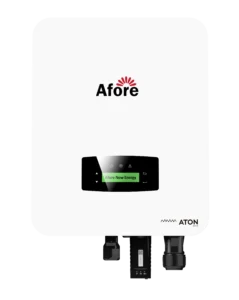
Conseils d'installation et consignes de sécurité
L'installation d'un onduleur de 1500 watts peut sembler être une tâche simple, mais la faire correctement peut faire une énorme différence en termes de performances, d'efficacité et, surtout, de sécurité. Que vous installiez un système dans votre véhicule de loisirs, votre maison ou votre cabane hors réseau, le respect de quelques règles essentielles vous permettra d'éviter des erreurs coûteuses et d'assurer un fonctionnement sans heurts.
Voici tout ce que vous devez savoir pour installer correctement et en toute sécurité votre onduleur de 1500 watts.
Choisir le bon emplacement
Votre onduleur de 1500 watts a besoin d'une bonne ventilation pour éviter la surchauffe. Trouvez un emplacement qui réponde aux critères suivants :
- Reste sec et frais
- A au moins 2-4 pouces d'espace libre sur tous les côtés
- N'est pas exposé à la lumière directe du soleil
- Permet un accès facile pour l'entretien et l'inspection
Lors de l'installation de l'onduleur, n'oubliez pas de le tenir éloigné des objets inflammables et de ne pas le placer dans un endroit poussiéreux, gras ou humide afin de le rendre plus sûr et plus fiable.
Utiliser le bon calibre de fil
Un mauvais câblage est l'une des causes les plus fréquentes de défaillance de l'onduleur. Utilisez toujours un câble capable de supporter le courant requis par un onduleur de 1500 watts. Pour les systèmes 12V, vous devez utiliser un câble plus épais (généralement 2 AWG ou plus) afin de réduire au minimum la chute de tension et l'accumulation de chaleur.
N'oubliez pas de raccourcir au maximum la longueur des câbles et de suivre le schéma de câblage du fabricant.
Installer un fusible ou un disjoncteur approprié
La sécurité avant tout ! Un fusible ou un disjoncteur placé entre votre batterie et l'onduleur de 1500 watts protège votre système contre les courts-circuits et les surcharges. Ce simple geste permet d'éviter les incendies, les dégâts matériels et les pointes de tension dangereuses.
Une règle empirique consiste à adapter la taille du fusible à la consommation maximale de courant de l'onduleur. Pour un onduleur 12V 1500 w, cela correspond souvent à 150-175 ampères.
Mise à la terre de l'onduleur
La mise à la terre de l'onduleur de 1500 watts est essentielle pour éviter les chocs électriques et garantir la sécurité du système. Respectez le code électrique local et les directives du fabricant de l'onduleur pour connaître la méthode de mise à la terre appropriée.
Connecter correctement les piles
Assurez-vous que la tension de votre banc de batteries correspond à la tension d'entrée de votre onduleur (généralement 12 ou 24 V). Vérifiez la polarité : le branchement de câbles à l'envers peut endommager instantanément votre onduleur de 1500 watts.
Serrez bien toutes les connexions des bornes, mais ne les serrez pas trop car les bornes risquent de se casser ou le filetage de s'effilocher.
Ne surchargez pas l'onduleur
Il est tentant de tout brancher en même temps, mais n'oubliez pas que votre onduleur de 1500 watts a une limite de puissance. Additionnez la puissance de vos appareils et maintenez-la en dessous de la capacité nominale - idéalement 80-90% de 1500 watts pour un fonctionnement sûr.
Les appareils ayant des surtensions importantes au démarrage (comme les réfrigérateurs ou les outils électriques) peuvent nécessiter momentanément plus de 1500 watts, même si leurs watts en fonctionnement sont inférieurs.
Utiliser un panneau de commande à distance (si disponible)
De nombreux onduleurs modernes de 1500 watts sont livrés avec des panneaux d'affichage à distance en option. Ceux-ci vous permettent de surveiller la tension, la sortie et les erreurs à partir d'un endroit pratique, ce qui est particulièrement utile dans les véhicules de loisirs ou les salles de batteries solaires.

Maintenance et dépannage
Votre onduleur de 1500 watts est un outil puissant et polyvalent, mais comme toute technologie, il a besoin d'un entretien régulier et d'une attention particulière pour fonctionner correctement. Que vous l'utilisiez pour la sauvegarde de la maison, les voyages en camping-car ou les installations solaires, un entretien de base et un dépannage rapide peuvent vous aider à éviter les pannes et les temps d'arrêt coûteux.
Les paragraphes suivants décrivent comment maintenir votre onduleur de 1500 watts en parfait état et ce qu'il faut faire lorsque les choses ne se passent pas comme prévu.
Conseils pour l'entretien courant
Un entretien agressif permettra à votre onduleur 1500 w de durer plus longtemps et de rester performant. Voici quelques conseils simples et pratiques :
1. Le garder propre et sans poussière
- Utilisez une brosse douce ou de l'air comprimé pour nettoyer les bouches d'aération et les ventilateurs.
- Essuyez l'extérieur avec un chiffon sec - évitez l'humidité ou les nettoyants agressifs.
- S'assurer qu'aucun débris ou insecte n'a pénétré dans l'appareil, en particulier dans le cas d'une installation à l'extérieur ou dans un garage.
2. Vérifier régulièrement les connexions
- Serrez toutes les bornes d'entrée/sortie au moins une fois tous les deux mois.
- Vérifiez la présence de corrosion sur les bornes de la batterie ou les extrémités des câbles.
- Inspecter les câbles pour détecter tout signe d'effilochage, de surchauffe ou d'usure.
3. Contrôler les performances
- Utilisez un voltmètre ou l'écran de l'onduleur pour contrôler la tension de sortie.
- Gardez un œil sur les niveaux de charge - ne poussez pas constamment votre onduleur de 1500 watts près de sa capacité maximale.
- Si vous en disposez, utilisez un moniteur à distance ou une application pour vérifier les niveaux de batterie, les codes d'erreur ou la température de l'onduleur.
4. Contrôle de la ventilation
- S'assurer que le ventilateur de refroidissement est opérationnel.
- Veillez à ce que la circulation de l'air ne soit pas bloquée - la surchauffe est l'une des principales causes de défaillance de l'onduleur.
Problèmes courants et comment les résoudre
Même un onduleur de haute qualité de 1500 watts peut rencontrer des problèmes de temps à autre. La bonne nouvelle ? La plupart des problèmes sont faciles à diagnostiquer et à résoudre.
1. L'onduleur ne s'allume pas
- Causes possibles: Batterie déchargée, câble mal fixé, fusible grillé.
- Correction rapide: Vérifiez la tension de la batterie - elle doit être d'au moins 11 V pour un onduleur de 12 V. Remplacez les câbles ou les fusibles endommagés.
2. L'onduleur émet des bips ou les voyants d'avertissement clignotent.
- Causes possibles: Surcharge, batterie faible, surchauffe.
- Correction rapide: Coupez la charge, laissez l'onduleur refroidir et rechargez la batterie avant de redémarrer.
3. Absence de sortie ou puissance incohérente
- Causes possibles: Prises défectueuses, mauvais câblage, mauvais fonctionnement de l'onduleur.
- Correction rapide: Testez la prise avec un autre appareil. Vérifiez le câblage. Si le problème persiste, réinitialisez l'onduleur ou consultez le manuel pour connaître les codes de diagnostic.
4. Surchauffe fréquente de l'onduleur
- Causes possibles: Flux d'air bloqué, température ambiante excessive, charge élevée.
- Correction rapide: Déplacez l'onduleur dans un endroit plus frais et assurez-vous que le ventilateur n'est pas obstrué. Réduisez la consommation d'énergie à moins de 1200 watts si possible.
5. Bruits de bourdonnement ou de cliquetis
- Causes possibles: Composants internes desserrés, commutation de relais, fluctuations de tension.
- Correction rapide: Un bruit mineur peut être normal, mais s'il devient plus fort ou persistant, déconnectez toutes les charges et redémarrez le système. Si le bruit persiste, demandez de l'aide au fabricant.
Quand appeler à l'aide
Si vous avez essayé les solutions de base et que l'onduleur 1500 w ne fonctionne toujours pas correctement, ne prenez pas le risque d'endommager davantage l'appareil. Il est préférable de faire appel à une assistance professionnelle pour les cas suivants :
- Codes d'erreur ou bips d'avertissement persistants et insolubles
- Dommages physiques à l'appareil (marques de brûlure, fissures, infiltration d'eau)
- Odeur électrique ou fumée visible à l'intérieur
- La puissance de sortie est instable même lorsque la charge varie Stable
La plupart des marques connues proposent une assistance technique et des manuels téléchargeables pour vous aider à résoudre les problèmes - il vous suffit de vous munir de votre modèle et de votre numéro de série.

Conclusion
Si vous avez besoin d'une alimentation portable fiable, capable de faire fonctionner la plupart de vos appareils essentiels sans surcharge, un onduleur de 1500 watts est une excellente solution intermédiaire. Il offre suffisamment de jus pour les besoins quotidiens, fonctionne bien avec l'énergie solaire et n'est pas onéreux. Il vous suffit de faire preuve d'intelligence dans votre consommation d'énergie, de comprendre vos exigences en matière de charge et de l'associer à la bonne configuration de batterie.
FAQ
Quelle est la puissance d'un onduleur de 1500 watts ?
L'onduleur de 1500 watts est un véritable concentré de puissance et peut alimenter de nombreux appareils hors ligne dans votre maison, comme les réfrigérateurs, les micro-ondes, les cafetières et les gros appareils, ainsi que les lampes LED, les ordinateurs portables, les téléviseurs et même les petits outils électriques. Toutefois, vous devez tenir compte de la puissance de démarrage (surtension) de chaque appareil, et pas seulement des watts de fonctionnement.
De combien de batteries ai-je besoin pour un onduleur de 1500 watts ?
Cela dépend de la durée d'utilisation de l'onduleur et de l'utilisation de batteries de 12 ou 24 volts. Une estimation générale : pour faire fonctionner un onduleur de 1500 watts pendant une heure à pleine charge (1500W), vous aurez besoin d'environ 125 Ah de batterie à 12 V. Pour des durées d'utilisation plus longues, vous aurez besoin d'une capacité supplémentaire ou vous passerez à un système à 24 V pour une meilleure efficacité. Pour des durées de fonctionnement plus longues, vous aurez besoin d'une capacité supplémentaire ou vous passerez à un système 24V pour une meilleure efficacité.
Puis-je utiliser un onduleur de 1500 W pour mon installation solaire ?
Oui ! Un onduleur de 1500 watts est une taille populaire pour les installations solaires de petite et moyenne taille. Il peut être intégré à des panneaux solaires, des régulateurs de charge et des batteries pour créer un système hybride ou hors réseau fiable. Assurez-vous simplement que votre onduleur est compatible avec l'énergie solaire (l'onde sinusoïdale pure est préférable pour les appareils électroniques sensibles).
Un onduleur de 1500 watts est-il suffisant pour une utilisation domestique d'urgence ?
Absolument, mais avec des limites. En cas de panne de courant, un onduleur de 1500 watts peut alimenter quelques appareils essentiels. Il peut par exemple alimenter quelques lampes, des chargeurs de téléphone portable, un ventilateur, voire un petit réfrigérateur ou un micro-ondes. Cependant, il n'est pas assez puissant pour faire fonctionner la climatisation centrale, un chauffe-eau ou une cuisinière électrique.
Puis-je faire fonctionner un micro-ondes avec un onduleur de 1500 watts ?
Dans de nombreux cas, oui. La plupart des micro-ondes compacts nécessitent entre 600 et 1200 watts, mais leur surtension au démarrage peut brièvement dépasser 1500 watts. Si votre onduleur de 1500 watts a une bonne capacité de surtension (généralement 3000 watts ou plus), il peut supporter de brèves pointes comme celles d'un micro-ondes qui se met en marche.
Quelle est la durée de fonctionnement d'un onduleur de 1500 watts sur une batterie de voiture ?
Pas très longtemps, surtout à pleine charge. Une batterie de voiture standard de 12V peut fournir environ 50-70Ah, ce qui peut alimenter un onduleur de 1500 watts pendant environ 20-30 minutes. L'utilisation de batteries à décharge profonde ou d'un parc de batteries dédié est fortement recommandée pour des durées plus longues que de courtes périodes.
Une onde sinusoïdale pure est-elle nécessaire pour un onduleur de 1500 W ?
Pour la plupart des appareils électroménagers et électroniques modernes, oui. Un onduleur de 1500 watts à onde sinusoïdale pure fournit une énergie plus propre et plus stable. Les onduleurs à onde sinusoïdale corrigée sont moins chers mais peuvent provoquer des bourdonnements, des surchauffes ou endommager certains appareils électroniques.
Puis-je charger mes appareils pendant que l'onduleur fonctionne ?
Absolument ! C'est l'une des principales raisons de posséder un onduleur de 1500 watts. Vous pouvez charger en toute sécurité votre téléphone, votre tablette, votre ordinateur portable, votre appareil mobile et même faire fonctionner plusieurs appareils en même temps - tant que la puissance totale reste dans les limites fixées.
Quelles caractéristiques de sécurité dois-je rechercher dans un onduleur de 1500 watts ?
Cherchez :
- Protection contre les surcharges
- Arrêt en cas de faible tension
- Arrêt thermique
- Protection contre les courts-circuits
- Protection contre les défauts à la terre
Ces caractéristiques agissent comme des gardiens, protégeant l'onduleur de 1500 watts et les appareils de votre maison contre les dommages afin qu'ils puissent nous servir longtemps et en toute sécurité. De cette manière, il est plus solide de l'utiliser.




